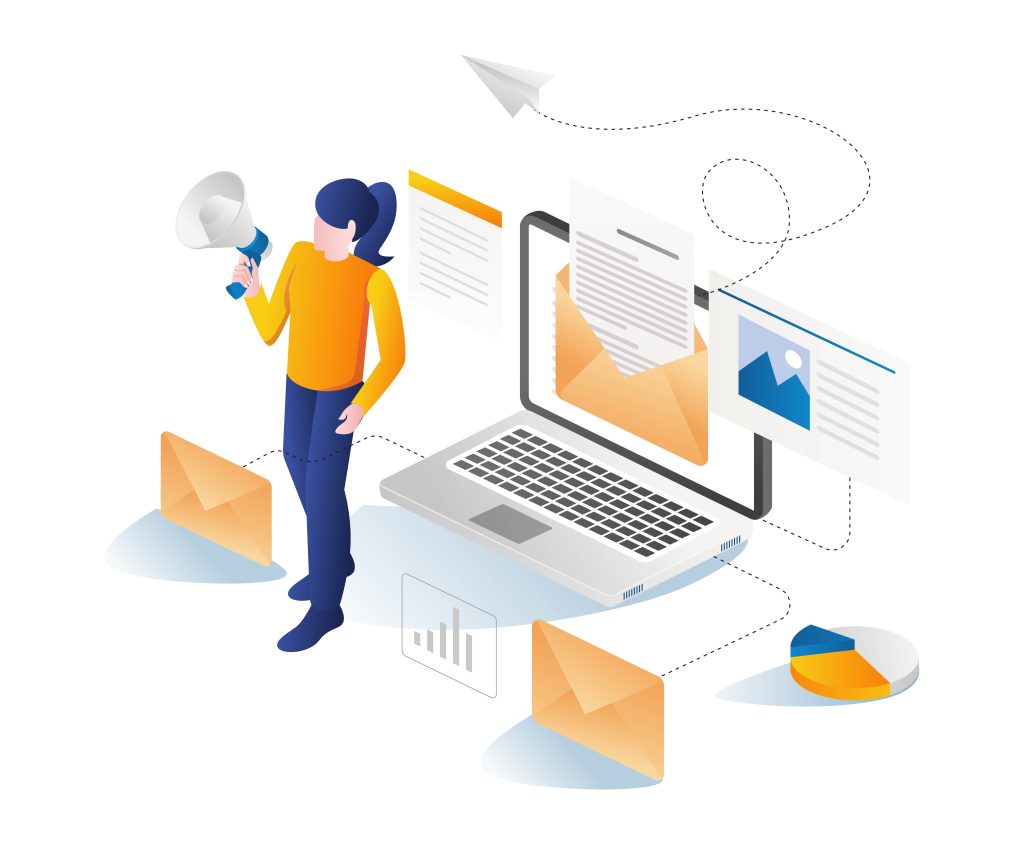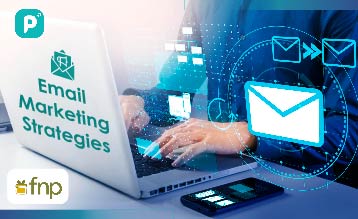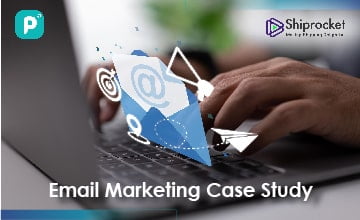One of the toughest things for email marketers is making sure their emails actually reach the person they’re sending them to. It’s really discouraging when your emails end up in the spam folder, especially after you’ve put so much work into making them engaging. No matter if you’re sending cold emails or marketing ones, it’s super important to make sure your emails actually get to the person you’re sending them to. Email deliverability means how well your emails make it to the right inbox. So, if your deliverability isn’t good, your emails might end up in spam instead of where they should be. But here’s the good part – with some work, you can make sure your email deliverability is good!
In this blog, we’ll share simple tips to help your emails get where they’re supposed to, so more people will open and read them.
Understanding the Sender Reputation for Email Deliverability
Understanding the sender’s reputation is pivotal in optimizing email delivery. It’s a metric that ISPs employ to assess the trustworthiness of incoming messages. A positive reputation ensures emails land in the inbox, while a poor one may lead to the dreaded spam folder.
Factors influencing sender reputation include:
- Email engagement rates,
- Complaint levels, and
- Bounce rates
Maintaining a clean, opted-in subscriber list is essential. Consistency in content quality, relevant subject lines, and avoiding spammy practices also contribute. Regular monitoring and analysis of sender scores can uncover issues early, allowing for corrective measures. A sterling sender reputation guarantees effective email campaigns.
Tips for Maintaining a Good Sender Reputation
Maintaining a positive sender reputation is paramount for successful email deliverability. Here are some best practices to ensure your emails reach the intended recipients’ inboxes:

- Permission-Based Lists: Only send emails to individuals who have explicitly opted in to receive them. Avoid purchasing or renting email lists, as this can lead to high bounce rates and spam complaints.
- Regular List Cleaning: Routinely remove inactive or invalid email addresses from your subscriber list. This helps maintain list hygiene and demonstrates to ISPs that you’re sending to engaged recipients.
- Consistent Sending Patterns: Maintain a steady sending frequency. Abrupt changes in email volume can trigger alarms with ISPs. Additionally, ensure your content is relevant and engaging to keep recipients interested.
- Avoid Spam Triggers: Steer clear of spammy elements in your emails, such as excessive punctuation, ALL CAPS, or certain trigger words commonly associated with spam.
- Implement Double Opt-Ins: Require users to confirm their subscription. This two-step process confirms their intent and helps weed out fake or mistyped email addresses.
- Address Bounce Rates: Monitor and promptly remove undeliverable email addresses. High bounce rates can be unfavorable for your sender reputation.
- Respond to Unsubscribe Requests Promptly: Make it easy for recipients to opt out of your emails. This not only complies with regulations but also prevents them from marking your emails as spam.
- Handle Complaints Swiftly: If someone marks your email as spam, address the complaint promptly. Take it as an opportunity to improve your email deliverability practices.
- Authenticate Your Domain: Use SPF, DKIM, and DMARC records to verify the legitimacy of your emails. Spoofing and phishing attempts can be prevented by genuine domains.
- Choose a Reputable Email Service Provider (ESP): Select an ESP with a good reputation and one that actively manages their IP addresses’ reputations.
- A/B Testing: Experiment with different elements of your emails to refine content and increase engagement.
- Monitor Sender Reputation Scores: Use tools like Return Path or SenderScore to keep an eye on your sender reputation and make adjustments as needed.
Inbox Placement Strategies
Inbox placement, determining where an email lands in a recipient’s inbox, is pivotal for email deliverability effectiveness. It directly impacts whether the message gets noticed or buried. Achieving good inbox placement leads to higher open, click, and conversion rates, making it a critical aspect of email marketing success.
To enhance inbox placement, implement these key strategies:
- Maintain a Clean List: Focus on organic growth and avoid adding contacts without their explicit permission. Avoid buying or scraping email addresses, as this can lead to high bounce rates and spam complaints.
- Email Authentication: Utilize protocols like SPF, DKIM, and DMARC to establish legitimacy and build trust with mailbox providers. These measures help prevent phishing attempts and ensure that your emails are recognized as genuine.
- Engage Subscribers: Consistent, relevant, and personalized content keeps subscribers interested and active. Regular communication and tailored content based on their preferences enhance engagement and build a loyal readership.
- Manage Complaints and Unsubscribes: Swiftly address complaints and promptly remove individuals who request to unsubscribe. This not only complies with regulations but also prevents further spam reports.
- Email Verification: Regularly validate email addresses to eliminate invalid or outdated ones. This prevents hard bounces, which can negatively impact your sender reputation.
By adopting these practices and conducting inbox placement tests, you can substantially improve the chances of your emails reaching the right audience. This leads to increased visibility and better interaction with your recipients, ultimately driving the success of your email marketing endeavors.
Monitoring and Analytics

Regularly monitor performance metrics in your email analytics dashboard. Keep an eye on key indicators like unsubscribe rates, click-through rates, bounce rates, and spam complaints. Utilize tools like Google Postmaster to assess your sender reputation. Additionally, gauge recipient engagement levels for a comprehensive view.
When using a new IP address, prioritize an IP warmup, also known as domain warmup, to establish a positive sending reputation. Seek guidance from your Email Service Provider (ESP) to effectively implement this process. This proactive approach ensures optimal email deliverability and engagement.
Future of Email Delivery Optimization

The future of email delivery optimization is poised for exciting advancements.
- Artificial Intelligence (AI) and machine learning will play a pivotal role in refining targeting and personalization, ensuring messages resonate with individual recipients. Hyper-segmentation and dynamic content will become more sophisticated, tailoring emails based on real-time user behavior and preferences.
- Augmented Reality (AR) and interactive elements will revolutionize email content, creating immersive experiences within the inbox. Predictive analytics will enable marketers to anticipate recipient behavior and adjust campaigns in real-time. Additionally, the integration of blockchain technology may enhance email security and authentication.
- Email accessibility will be prioritized, catering to diverse audiences with varying abilities. With the rise of mobile usage, responsive design and mobile-first approaches will continue to dominate. Conversational marketing via chatbots within emails will become more prevalent, providing instant, personalized interactions.
Lastly, privacy and compliance will remain paramount, with stricter regulations guiding email marketing practices. Adherence to privacy standards and transparent data handling will be essential. Overall, the future of email delivery optimization promises a more dynamic, personalized, and secure communication channel for businesses and consumers alike.
Wrapping Up
To wrap things up, getting emails to the right people is super important. Following good practices like keeping your list clean, using proper authentication, and sending interesting content helps a lot. In the future, new techs like AI and interactive stuff will make emails even cooler. Making sure everyone can easily read and understand your emails is also really important, as well as being careful with people’s privacy. So, as email keeps changing, staying flexible and learning about new ways to make your emails better is the key to success!
Prepared to take your business to greater heights? Discover our comprehensive Email Marketing Service and experience a surge in your sales!




